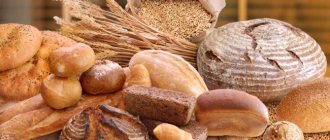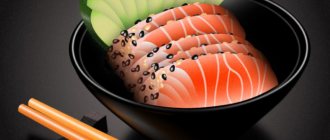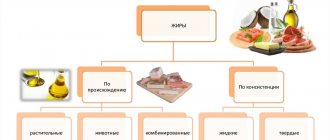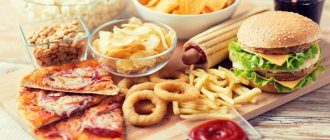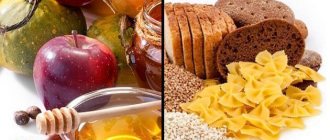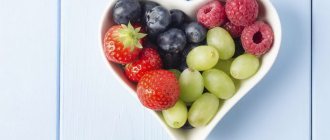What are carbohydrates?
Carbohydrates are organic substances that are the main source of energy for your body. It is one of the three macronutrients you need to survive. The other two are proteins and fats .
Types of carbohydrates:
- Monosaccharides are the simplest carbohydrates that do not break down into even simpler ones. For example, glucose, fructose.
- Oligosaccharides are more complex compounds, built from several (up to 10) monosaccharide residues. For example, beet raffinose.
- Disaccharides are complex compounds built from 2 monosaccharide residues. For example, beet or cane sugar, lactose (milk sugar).
- Polysaccharides are complex compounds formed from a large number of glucose residues. They are divided into digestible (starch) and non-digestible (fiber). Fiber, due to its properties, has a beneficial effect on the entire body as a whole. Helps prevent many diseases, including cancer.
Carbohydrates: monosaccharides, disaccharides, polysaccharides
Carbohydrates are organic compounds, most often of natural origin, consisting only of carbon, hydrogen and oxygen. Carbohydrates play a huge role in the life of all living organisms. This class of organic compounds received its name because the first carbohydrates studied by man had a general formula of the form Cx(H2O)y.
Those. they were conventionally considered compounds of carbon and water. However, it later turned out that the composition of some carbohydrates deviates from this formula. For example, a carbohydrate such as deoxyribose has the formula C5H10O4. At the same time, there are some compounds that formally correspond to the formula Cx(H2O)y, but are not related to carbohydrates, such as formaldehyde (CH2O) and acetic acid (C2H4O2).
However, the term “carbohydrates” has historically been assigned to this class of compounds, and therefore is widely used in our time.
Classification of carbohydrates
Depending on the ability of carbohydrates to be broken down during hydrolysis into other carbohydrates with a lower molecular weight, they are divided into simple (monosaccharides) and complex (disaccharides, oligosaccharides, polysaccharides). As you might guess, from simple carbohydrates, i.e. monosaccharides, it is impossible to obtain carbohydrates with an even lower molecular weight by hydrolysis.
The hydrolysis of one disaccharide molecule produces two monosaccharide molecules, and the complete hydrolysis of one molecule of any polysaccharide produces many monosaccharide molecules.
Chemical properties of monosaccharides using the example of glucose and fructose
As you can see, both the glucose molecule and the fructose molecule contain 5 hydroxyl groups, and therefore they can be considered polyhydric alcohols. The glucose molecule contains an aldehyde group, i.e. in fact, glucose is a polyhydric aldehyde alcohol. In the case of fructose, a ketone group can be found in its molecule, i.e. fructose is a polyhydric keto alcohol.
Chemical properties of glucose and fructose as carbonyl compounds
All monosaccharides can react in the presence of catalysts with hydrogen. In this case, the carbonyl group is reduced to an alcohol hydroxyl group. The glucose molecule contains an aldehyde group, and therefore it is logical to assume that its aqueous solutions give high-quality reactions to aldehydes.
Attention! Indeed, when heating an aqueous solution of glucose with freshly precipitated copper (II) hydroxide, just as in the case of any other aldehyde, a brick-red precipitate of copper (I) oxide precipitates from the solution. In this case, the aldehyde group of glucose is oxidized to a carboxyl group - gluconic acid is formed. Glucose also enters into a “silver mirror” reaction when exposed to an ammonia solution of silver oxide.
However, unlike the previous reaction, instead of gluconic acid, its salt is formed - ammonium gluconate, because dissolved ammonia is present in the solution. Fructose and other monosaccharides, which are polyhydric ketoalcohols, do not react qualitatively with aldehydes.
Chemical properties of glucose and fructose as polyhydric alcohols
Because monosaccharides, including glucose and fructose, have several hydroxyl groups in their molecules. All of them give a qualitative reaction to polyhydric alcohols. In particular, freshly precipitated copper (II) hydroxide dissolves in aqueous solutions of monosaccharides. In this case, instead of the blue Cu(OH)2 precipitate, a dark blue solution of copper complex compounds is formed.
Disaccharides. Chemical properties
Disaccharides are carbohydrates whose molecules consist of two monosaccharide residues linked to each other through the condensation of two hemiacetal hydroxyls or one alcohol hydroxyl and one hemiacetal. The bonds formed in this way between monosaccharide residues are called glycosidic. The formula of most disaccharides can be written as C12H22O11.
«12817»]
The most common disaccharide is the familiar sugar, called sucrose by chemists. The molecule of this carbohydrate is formed by cyclic residues of one molecule of glucose and one molecule of fructose. The connection between disaccharide residues in this case is realized due to the elimination of water from two hemiacetal hydroxyls.
Since the bond between monosaccharide residues is formed by the condensation of two acetal hydroxyls, it is impossible for a sugar molecule to open any of the rings, i.e. transition to the carbonyl form is impossible. In this regard, sucrose is not able to give high-quality reactions to aldehydes.
Disaccharides of this kind, which do not give a qualitative reaction to aldehydes, are called non-reducing sugars. However, there are disaccharides that give qualitative reactions to the aldehyde group. This situation is possible when a hemiacetal hydroxyl from the aldehyde group of one of the original monosaccharide molecules remains in the disaccharide molecule.
In particular, maltose reacts with an ammonia solution of silver oxide, as well as copper (II) hydroxide, like aldehydes.
Disaccharides as polyhydric alcohols
Disaccharides, being polyhydric alcohols, give the corresponding qualitative reaction with copper (II) hydroxide, i.e. when their aqueous solution is added to freshly precipitated copper (II) hydroxide, the water-insoluble blue precipitate of Cu(OH)2 dissolves to form a dark blue solution.
Polysaccharides. Starch and cellulose
Polysaccharides are complex carbohydrates whose molecules consist of a large number of monosaccharide residues linked by glycosidic bonds. There is another definition of polysaccharides. Polysaccharides are complex carbohydrates whose molecules form a large number of monosaccharide molecules upon complete hydrolysis.
Important! In general, the formula of polysaccharides can be written as (C6H11O5)n. Starch is a substance that is a white amorphous powder, insoluble in cold water and partially soluble in hot water to form a colloidal solution, commonly called starch paste.
Starch is formed from carbon dioxide and water during photosynthesis in the green parts of plants under the influence of energy from sunlight. Starch is found in the largest quantities in potato tubers, wheat, rice and corn grains. For this reason, these sources of starch are the raw materials for its production in industry.
Cellulose is a substance that, in its pure state, is a white powder that is insoluble in either cold or hot water. Unlike starch, cellulose does not form a paste. Almost pure cellulose consists of filter paper, cotton wool, and poplar fluff.
Both starch and cellulose are plant products. However, the roles they play in plant life are different. Cellulose is mainly a building material; in particular, it mainly forms the membranes of plant cells. Starch primarily has a storage and energy function.
Functions of carbohydrates in the human body
- The role of carbohydrates is great. Once in the gastrointestinal tract, they are broken down into glucose, which in turn enters the cells and is used by the body as a source of energy. When they are insufficient to produce energy, proteins and fats break down, which leads to the accumulation of toxic ketones in the blood.
- They are able to accumulate in the liver, skeletal muscles, and other tissues in the form of glycogen.
- They take part in the synthesis of many substances necessary for the normal functioning of your body. For example, complex proteins, components of the immune system, etc.
- Regulates the metabolism of proteins and fats.
- Necessary for the normal functioning of the heart, liver, muscles and central nervous system.
The role of carbohydrates and their types
For the proper functioning of the human body, everything is important: proteins are necessary for the construction of muscle tissue, fats are responsible for the condition of the heart and blood vessels, the role of carbohydrates is to provide the body with energy.
If you completely give up carbohydrates, a person will experience lethargy, a feeling of constant hunger, mental acuity will suffer - the processes of thinking and concentration will become slower.
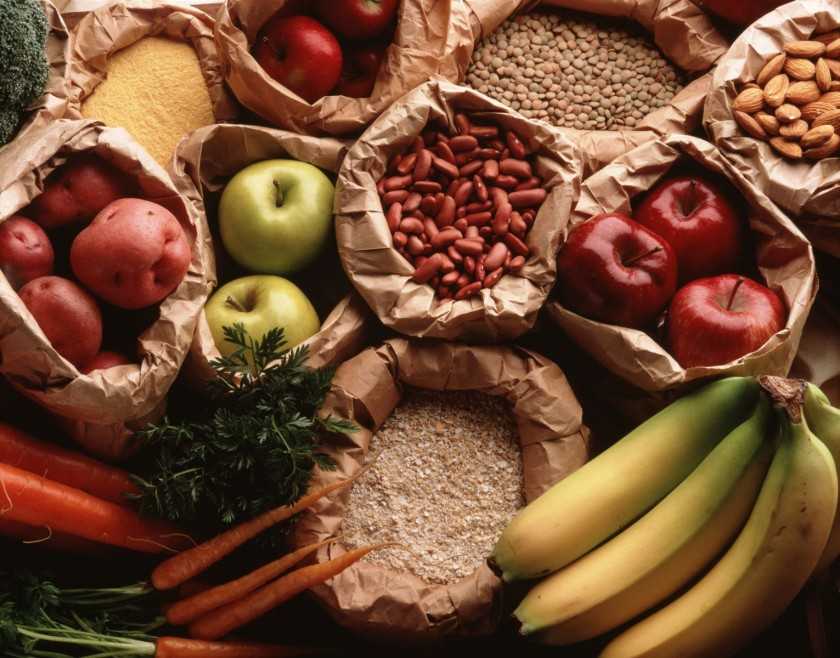
There are two types of carbohydrates:
Slow carbohydrates are found in foods rich in starch, glycogen, and fiber. Starch saturates the body with saccharides, glycogen gives energy, fiber gives a feeling of satiety.
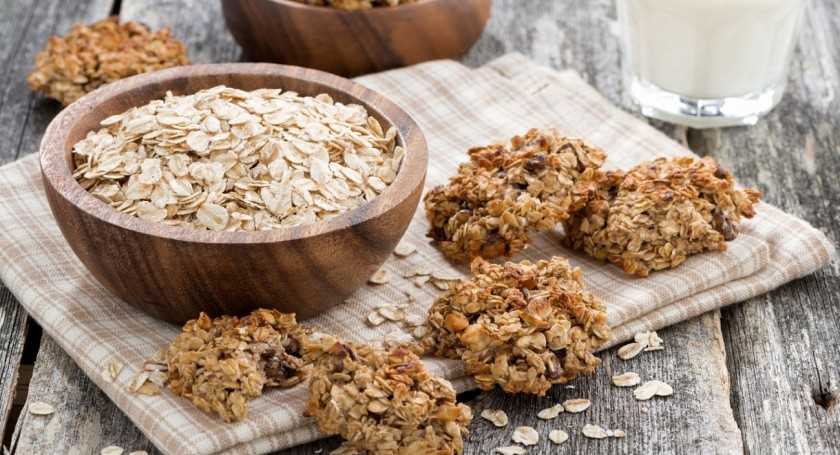
You can eat such food often - these substances do not cause insulin jumps and ensure a decrease in blood sugar. Complex carbohydrates are healthy and high in calories. They are found in the following dishes and products:

Quickly absorbed into the blood, they are absorbed within a few minutes, thanks to which a person instantly feels a surge of energy. It is recommended to consume foods containing simple carbohydrates when you urgently need to restore strength.
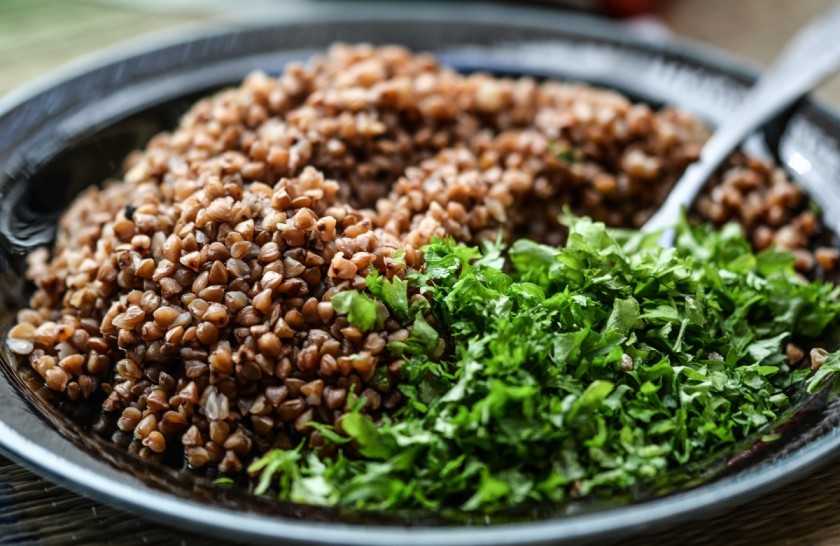
But the surge of strength will only last for a short time. Dishes and products with fast carbohydrates:
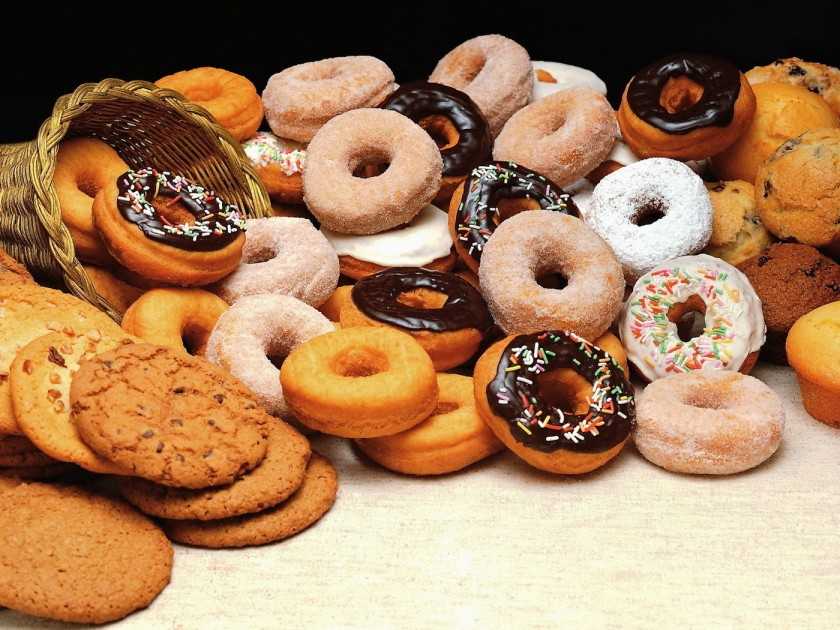
Carbohydrates are found in almost all food products, except meat, poultry and fish - this food contains only proteins, and lard, vegetable oils and hard cheeses - these are sources of fat.
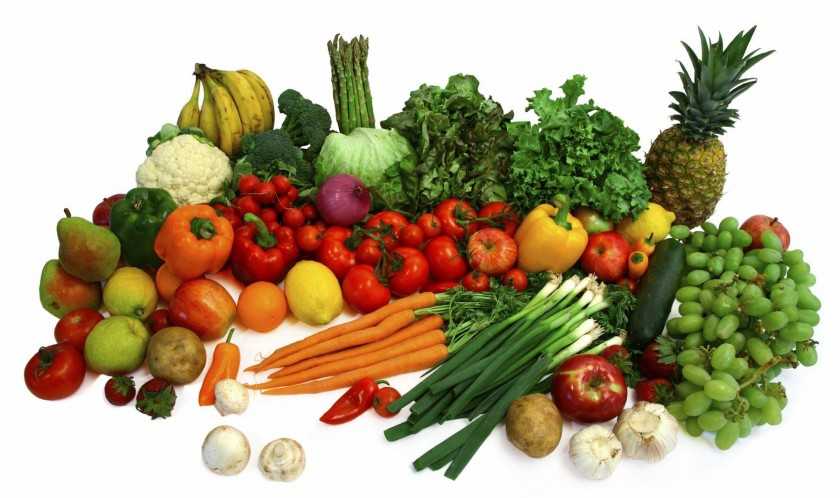
When compiling your menu with an approximate list of foods that contain carbohydrates, you need to know that they are present in:
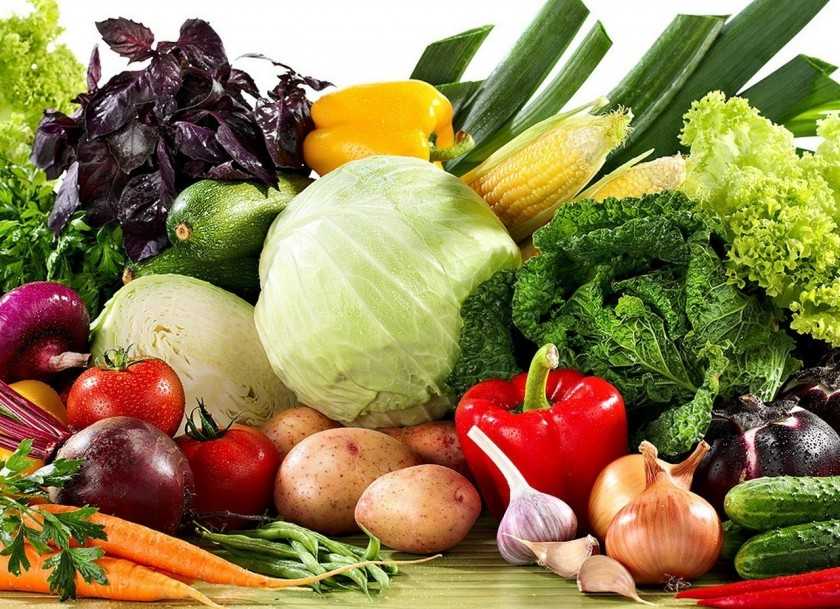
Different food groups have different carbohydrate contents.
What foods contain carbohydrates
Most foods are carbohydrates. They are not found in products of animal origin (meat, fish and seafood, eggs, etc.). The exception is dairy products that contain the milk sugar lactose.
Sources:
- Fruits.
- Vegetables, greens.
- Cereals, different types of flour.
- Nuts and seeds.
- Legumes (beans, peas, lentils, soybeans).
- Bread, pastries, cakes, pastries, etc.
- Pasta, noodles.
- Sugar, starch, honey.
- Carbonated drinks with sugar, compote, juices, tea and coffee with sugar.
- Alcohol.
- Dairy products, etc.
Rating of food products and dishes with fast and slow carbohydrates
Slow carbohydrates
Low and medium GI foods
This includes pasta that was made from durum wheat. You can also use brown rice and oatmeal as a side dish. Buckwheat is especially popular among supporters of proper nutrition. In addition, it is worth paying attention to such products as quinoa, amaranth, chickpeas and mung bean. For dishes that require flour, it is best to use coke flour, whole wheat flour or spelled flour.
Bread made from whole grain flour, dark chocolate or carob chocolate are perfect for snacking. White sugar should be replaced with stevia or coconut sugar. Jerusalem artichoke syrup and honey will also add sweetness to a drink or dish.

Bread
Healthy foods include apples, apricots, grapefruits, and oranges. The diet is perfectly complemented by sweet potatoes, which can be called “sugar potatoes” because of their sweetness, spinach, beans, green peas, cabbage, carrots and tomatoes. The most commonly recommended fermented milk products are milk and cottage cheese.
High GI foods
This category often includes white polished rice, boiled or fried potatoes, and corn flakes. The list is complemented by millet, pasta and noodles made from small varieties of wheat, various muesli with sugar and even semolina porridge. Rice, corn and wheat flour are also sources of so-called short carbohydrates. This group also includes white sugar, brown cane sugar and yogurt.
If a person needs a quick burst of energy, then during a snack you can eat milk chocolate, a bun, watermelon, melon, banana or pineapple.
From the above, you can determine the most healthy dishes that will saturate the body and give an energy boost for a long period of time. It can be buckwheat, oatmeal or rice porridge. Pasta made from the right pasta also diversifies your diet. You can cook soups from a set of legumes. If you add chicken to all these dishes, you will get a complete meal for bodybuilders, since this is exactly what they eat during heavy training.
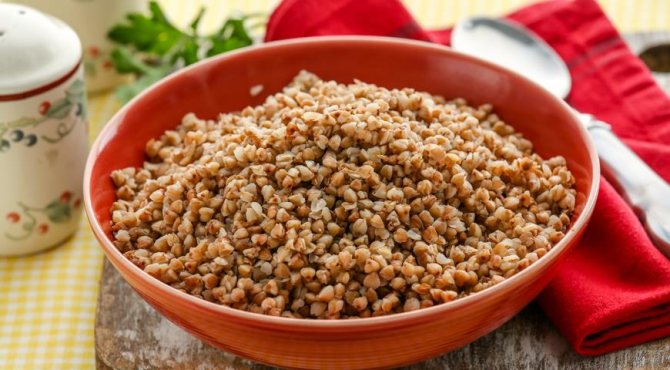
Buckwheat
You can make various fruit salads as snacks. By mixing high and low GI fruits, you can get an excellent energy mixture that will fill the body with the energy needed for physical or mental work.
An excellent replacement for pastries and pies that are harmful to the body can be pancakes or pancakes made with milk, egg white and whole grain flour. The dish can be seasoned with cottage cheese, berries and honey if desired.
There are various options for healthy burgers. They are made from whole grain bread with bran. Fresh lettuce, tomatoes, cucumbers, meats and cheeses are usually used as fillings.
Grocery list
Simple carbohydrates

Complex carbohydrates

When and how to consume carbohydrate-containing foods?
- Low-energy nutrition is of the ketogenic type. A lack of energy substances in the diet leads to the process of ketosis - fat burning, during which ketone substances enter the blood. These are toxins, in particular, depressing brain functions.
- In addition, the body increases the production of hormones - norepinephrine, adrenaline and glucagon. These compounds are useful in the short term, but on an ongoing basis lead to exhaustion of the body and endocrine disruption.
- Another unpleasant aspect of a low-carbohydrate diet is hypercholesterolemia with rapid vascular damage and the risk of conditions such as stroke or heart attack.
- Just 3-4 months of eating without plant fiber will cause gastrointestinal problems - vomiting, constipation or nausea. Additionally, a deficiency of vitamins B, C and A will form, the body will become acidic, the nervous system will become hyperactive, and the urinary system will react with gout.
- Separately, disorders of calcium phosphate, hemoglobin and glucose metabolism may develop. That is, a person will become acquainted with type 2 diabetes, osteoporosis or osteopenia.
Therefore, the right choice would be a healthy diet rich in slow carbohydrates.
There are general rules for consuming energy products.
You can use small amounts of fast carbohydrates, which will help your brain work intensively and will be a good way to start the day energetically. In the morning it is recommended:
- jam, marmalade or honey
- sweetened yoghurts
- cereal with dried fruits
Must include complex carbohydrates:
- whole grain bread
- durum wheat pastes
- dark pasta and brown rice
In addition, fruits or vegetables in salads, side dishes and fresh.
Starting from 18-19 hours, it is recommended to eat only protein foods with the addition of lettuce or vegetables, except potatoes and legumes.
Depending on daily activity, when an energetic period is replaced by a measured period, it is necessary to reduce the amount of carbohydrates in the diet.
Daily carbohydrate needs
The daily intake will be different for each person.
On the Internet, some sites claim that the carbohydrate norm is 3–5 g per 1 kg of weight. In reality, everything is more complicated. The norm must be calculated for each person individually .
The need depends on gender, age, weight, activity level , etc. Also, your current goals are of great importance. For example, when losing weight and gaining muscle mass, you need completely different amounts of carbohydrates per day.
As an example, calculations were made for a 30-year-old man and woman of average height and low activity. See table below.
In the case of weight gain, average activity was taken (3 workouts per week).
Based on your gender, weight, and weight goals, you can determine your carbohydrate needs. Of course, the figure is approximate, but the error will not be very large.
| 50 -55 kg | 55-60 kg | 60-65 kg | 65-70 kg | 75-80 kg | 80-85 kg | |
| Men | ||||||
| Weight loss | 140 | 145 | 150 | 155 | 160 | 165 |
| Weight maintenance | 160 | 165 | 170 | 175 | 180 | 185 |
| Muscle gain | 270 | 280 | 290 | 300 | 315 | 325 |
| Women | ||||||
| Weight loss | 110 | 115 | 120 | 125 | 135 | 140 |
| Weight maintenance | 130 | 137 | 145 | 150 | 160 | 165 |
| Muscle gain | 228 | 240 | 245 | 255 | 270 | 280 |
When gaining muscle mass, the body needs a lot of energy. In this case, it is recommended to focus on foods high in carbohydrates. Of course, not forgetting about proteins and fats.
Lack of carbohydrates
A deficiency can cause weakness, fatigue, irritability, and apathy. In addition, muscle tissue and fat reserves, as well as proteins and fats supplied with food, will begin to be used as a source of energy.
Excess carbohydrates
Excessive amounts of them lead to a set of extra pounds .
Abuse of simple carbohydrates can lead to diabetes, arterial hypertension, insulin resistance, cardiovascular diseases and cancer.
Complex carbohydrates , on the contrary, can prevent these and other diseases . Fiber plays a big role here.
When the need increases
Since carbohydrates are the main source of energy, the need for them increases with increased mental and physical activity. If you decide to play sports, gain muscle mass, or your new job involves heavy physical activity, increase the amount of carbohydrate-containing foods.
Carbohydrates and the right weight loss tactics
The right foods for effective weight loss are those that are rich in fiber and have a low glycemic index because they are broken down slowly in the body.
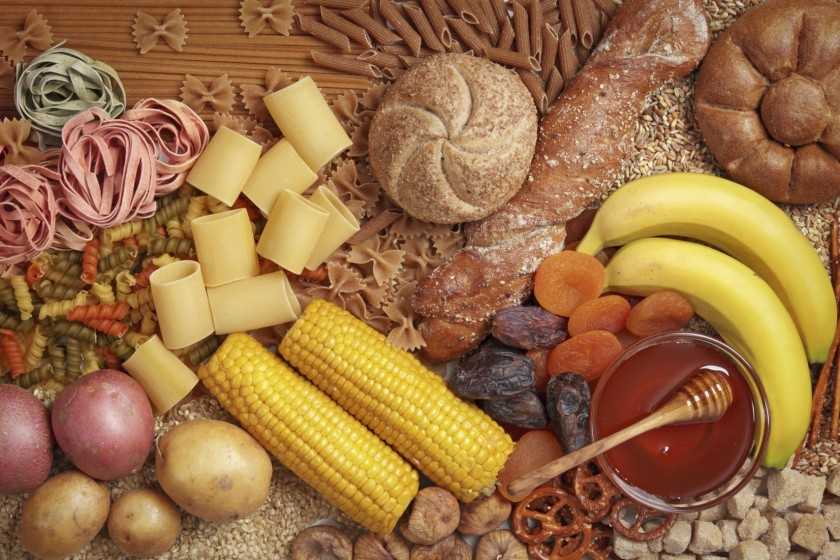
The products needed in this case are unsweetened: cruciferous vegetables, greens, legumes, cereals.
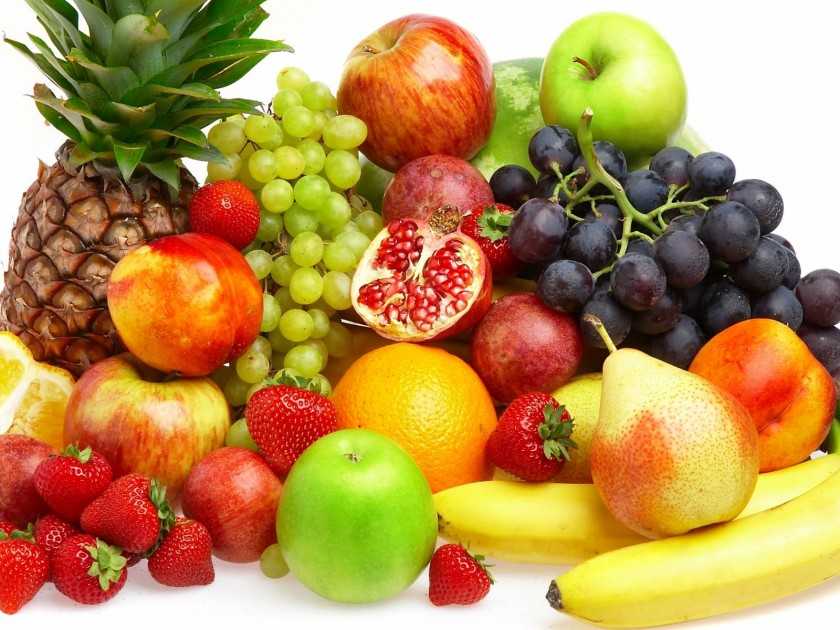
You should eat carbohydrates only for breakfast and lunch, and the evening menu should consist of protein foods. Satisfy the need for something sweet and tasty by eating nuts - this will delight the taste buds and perfectly support physical strength: 10 nuts will not harm you and will provide you with a sufficient amount of nutrients.

Nutritionists advise eating porridge, sunflower seeds, fiber-rich white cabbage, and sour apples. Apricots, cranberries, and fresh cucumbers will provide the body with pectin during the diet; buckwheat, rice, and pasta are also healthy and allowed.

In the desire to maintain physical health and make a slim figure, the main thing is not to overdo it, and not to forget that even in a diet mode, you should provide the body with nutrition that contains a complete, balanced complex of vitamins, macroelements, which include carbohydrates, and microelements .
Source
Recipes
In recipes for carbohydrate dishes, it is recommended to use low GI foods (cereals, mushrooms, legumes and vegetables). Dried fruits and honey can only be included in the breakfast menu as an addition to cereal granola, fruit salad or porridge.
Buckwheat with stewed mushrooms
Boil or soak 0.5 cups of buckwheat overnight (the proportion with water is 1:2). In the morning, sauté 150–200 g of champignons in a small amount of butter or without fat in a non-stick frying pan.
Mix the porridge and mushrooms, season with olive oil (if there is no fat in the mushrooms) or low-fat yogurt with thyme.
Lobio
Soak 150 g of cauliflower beans in a glass of cold water and leave for 3-5 hours. Boil for 1.5–2 hours until soft. At the end of cooking, chop 1 onion and simmer it in a dry frying pan with a pinch of curry.
Chop 30–50 g of walnuts and mix with black pepper and a pinch of khmeli-suneli. Mix all the ingredients of the dish, heat the mixture for 10–15 minutes in a frying pan without fat.
https://youtube.com/watch?v=PQJ1UnKp0N4
Zucchini with grain filling
Pour 100 g of grains (spelt, wheat groats) into a glass of water and bring to a boil. Add a small bay leaf and cook for 20-25 minutes, stirring every 1-3 minutes.
Wash and peel 0.5 kg of zucchini from the pulp, salt and pepper the halves, place them on a baking tray. Cool the cereal filling, add chicken yolk, garlic clove, mustard and seasonings. Fill zucchini boats with filling.
Sprinkle the boats with grated mozzarella and put them in the oven for half an hour (at a temperature of +190..+200°C). Decorate with greens.
Granola
Take 1 cup of any cereal (wheat, oats or buckwheat). Soak it in a small amount of water to germinate. After greenish sprouts appear (after 1–2 days), proceed to other actions.
Take a handful of sunflower and pumpkin seeds, cover them with water and leave overnight. In the morning, drain the water, steam 30 g of raisins, grate a small apple on a coarse grater. Remove the pits from 10 dates, steam them in hot water and grind in a blender to obtain a thick paste.
Mix sprouted grains, apple, seeds, dried fruits and date mass. Lightly salt the mixture, add cinnamon and other spices.
Carefully spread the granola base onto a baking sheet in a layer of 0.5–1 cm. Bake at minimum temperature for several hours (until dry). You can also use a vegetable dehydrator to prepare the dish. At a temperature of +40°C, the drying process takes 12–14 hours.
